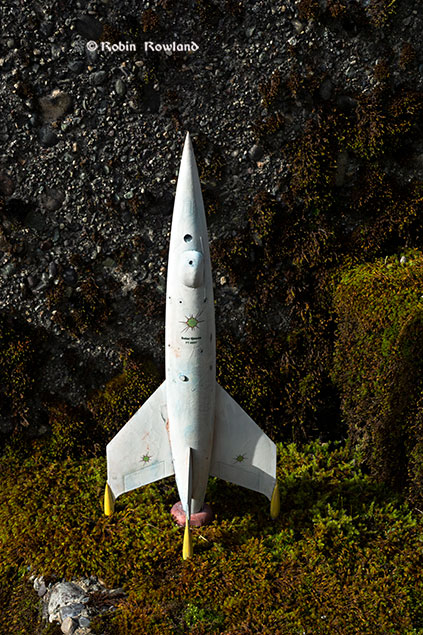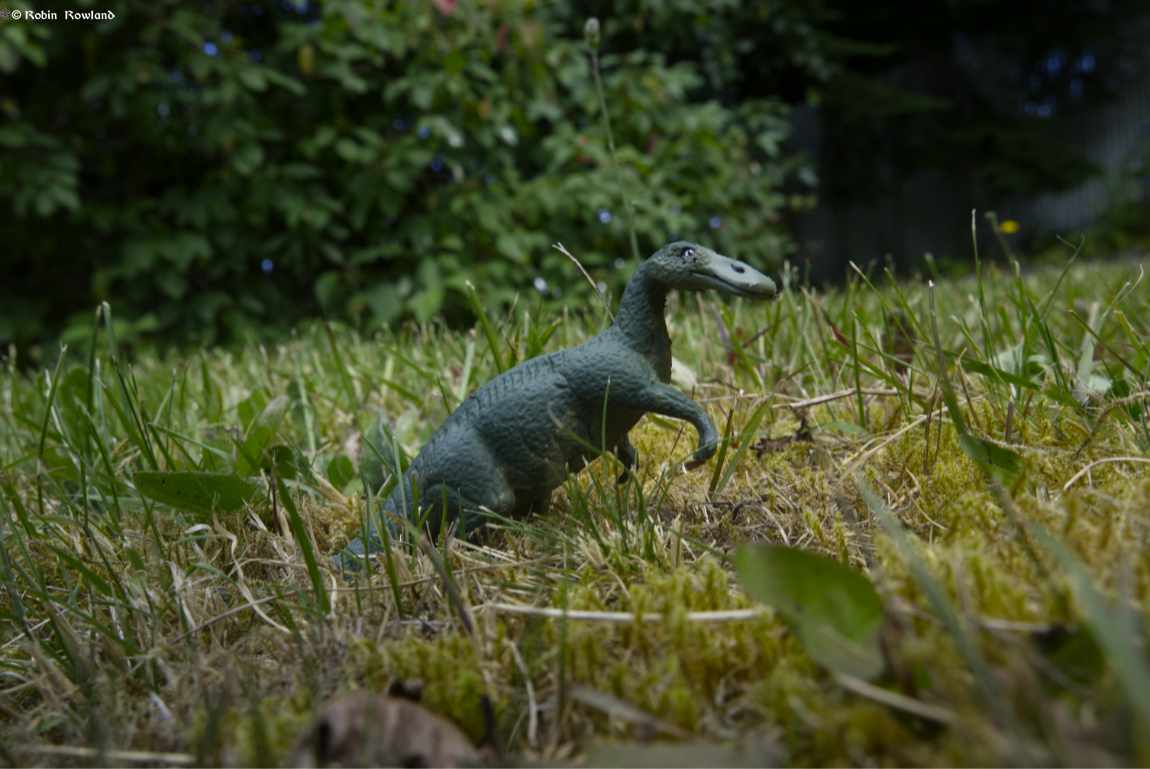
Galactic Tramp: Kitbashing Andre Norton’s Solar Queen from the Luna Rocket ship
Andre Norton’s Free Trader series was one of the favourites for science fiction readers for decades beginning with Sargasso in Space beginning back in 1955.

When I began reading science fiction as a kid, the classic rocket ship on book and magazine covers and in TV and movies was a sharply pointed, aerodynamic, finned and winged beauty, roughly based on the German V-2 Vergeltungswaffe 2 and earlier fictional and engineering concepts.

Apart from UFOs, Martians and flying saucers, the rocket ship pointing into the heavens was iconic.
To an earlier generation, the finned, tapered rocket ship meant space travel.
I’ve always wanted to model the Solar Queen.
A few years ago, I kitbashed the spherical Baldy ships from Norton’s Time Trader series. When I posted the photos on social media a couple of commenters asked for a Solar Queen.
The best model to kitbash was the Pegasus 1/144 Luna rocket ship. The blurb on the box says “The classic rocket designs of the 50’s set the standard for sci-fi rockets to come. The rocket ship “Luna” is a perfect example of that classic design aesthetic that influenced movie rocket designs ever since.”

Finding an approximate scale
I checked online on the scales of various model starships compared to the “prototype” of ships like the various Enterprises, Voyager, Excelsior and Rocinante.
The Solar Queen had a crew of 12 and carried cargo across the galaxy. In addition, in the various Free Trader novels the Solar Queen had one or two lifeboats, also capable of planetary operations, a flying atmospheric “flitter,” a ground crawler and scooter. The ship would require cargo space, living quarters, bridge and other control areas, hangars for the equipment and, of course, engines. Fuel was presumed to be nuclear of some kind. That meant the ship kept growing in size.
The saucer section of the Enterprise D with ten decks, was 100 metres at its thickest point, 25 metres at the rim and 500 metres in diameter. The Enterprise D saucer section had everything needed by the Solar Queen, from the bridge and impulse engineering, residential quarter, labs, computer cores and a small docking bay.
Norton described the Solar Queen as a “smooth running, tight held vessel” (Sargasso in Space 18) with cramped but adequate cabins for the crew.
Imagining the Solar Queen
I imagined if the Solar Queen was a pointy cross section of the Enterprise D saucer at its thickest point, with a bridge, hangar and cargo decks, crew cabins, computer core, engineering and the warp engines.
Decks could have been imagined as
Bow: sensors
Deck One: Bridge
Deck Two: Astrogation and planetary navigation and computer core
Deck Three: Crew cabins
Deck Four: Galley and Lounge, Lifeboat, escape pod bay with hidden hatch, additional cabins and storage
Deck Five: Cargo Bay
Deck Six: Cargo bay and second lifeboat bay.
Deck Seven: Hangar and Crawler/ flitter deck, large hatch
Deck Eight: Engineering. Small hatch and Crane Control with hidden hatch.
The Luna is 1/144 scale and 12 inches high. Based on the movie Destination Moon it had a crew of four and was overweight with fuel and equipment. The ship was 150 Feet or 45.72 Meters high or about the size of a ten story building.
If the Solar Queen was the height of 86 metres or a 20 story building, a 12 inch model the scale would be 1/275. If it was the height of 107 metres, a 25 story building, the scale would 1/350.
Norton wrote.
Compared to the big super ships of the Companies, the Solar Queen was a negligible midget… Here were the Company ships in their private docks, their needle points lifted to the sky, cargoes being loaded, activity webbing them…. The scooter steered to the left and made for the other line of berths, not to well filled, where the half dozen smaller Free Trade ships stood waiting blast off. And somehow, he was not surprised when they drew up at the foot of the ramp leading to the most battered one.
I decided to be rough about the scale, but let’s say it was approximately 1/350.
For those decks I used scraps, actually parts from dental floss.

The portholes are contemporary ship portholes from Shapeways. I tested until I found a drill bit that would create a hole for the port holes. The original port hole from Luna and the new ones do have “glass” windows, scrap clear plastic from food containers.

The hatches are model railroad warehouse doors.

I began with a traditional coat of metallic paint, just to see how it looked, before deciding to take another approach.
 Looking at the book covers in my collection; I saw that concept artists all had different interpretations of how a V2 derived spaceship would look far into the future. So, I decided to add a couple of aerodynamic “bulges” one for the cargo bay and a second for astrogation and planetary navigation.
Looking at the book covers in my collection; I saw that concept artists all had different interpretations of how a V2 derived spaceship would look far into the future. So, I decided to add a couple of aerodynamic “bulges” one for the cargo bay and a second for astrogation and planetary navigation.
T he pylon on the Luna model presented a bit of problem. Looking over the design of both the Luna model and the cover illustrations, there was a problem in those artist’s concepts, how do you get your cargo in and out of the ship with the narrow stern and its engines?
he pylon on the Luna model presented a bit of problem. Looking over the design of both the Luna model and the cover illustrations, there was a problem in those artist’s concepts, how do you get your cargo in and out of the ship with the narrow stern and its engines?
I live in an all weather seaport and modern freighters and bulk carriers have huge cranes on their decks. The old tramp freighters of the twentieth century also had cranes on their decks.

So, the pylon was not only a support for the ship planetside became a crane system. I glued a piece of scrap food container plastic to the pylon to suggest a retractable crane and hatch system to load and unload cargo and other material. The crane system would have operated independently on more undeveloped planets while working with ramps on more developed worlds.

The engine for the Luna model was much too small, so again I used scraps, another part from dental floss and the opener from a liquid egg container to produce a larger and more warp capable engine.


The paint scheme.
I had primed the hull and other parts and then a first, as noted, did a coat of shiny metallic paint, just as the covers suggested.
Creating the retractable crane had already given me the idea. Other science fiction novels like those by A. Bertram Chandler, who was actually the captain of an Australian coastal freighter, always based their Free Trader novels on the ubiquitous tramp freighters that plied the oceans of planet Earth prior to the invention of container ships.

So instead of a shiny silver needle pointing to the stars, the Solar Queen is painted like the battered tramp steamer of the 1950s that inspired the novels. (Wikipedia notes that the Millennium Falcon is also in the tradition of literary and Hollywood tramp steamers)
I deliberately used an older somewhat erratic airbrush to create the dirty white exterior of the hull.
The yellow ochre auxiliary jets pay tribute to the often yellow orchre painted funnels and equipment of old freighters.

The bright yellow strips of styrene I added to the hull are more modern, where key infrastructure on both the ships I have seen or visited or in modern industrial plants are painted a bright yellow. I assumed that practice would continue into the future.

Decals
I created the Sunburst for the Solar Queen using the Photoshop plugin Solar Cell from Flaming Pair, which allows the user to create various images of suns.

The registration number FT-6631 is the pre IBSN number for Norton’s second Free Trader novel Plague Ship.
A battered base for a battered ship.
The display base/landing field for the Solar Queen is designed to be alien. The Solar Queen lands on an alien world that actually has a space port and as on Earth has to choose the cheapest docking berth available. It doesn’t exactly fit since the landing field is designed and built for that planet’s ships.
The base was originally a container for breakfast sausages, cleaned in the dishwasher. I grey primed underneath only, so that the clear plastic would create some shine and look a little alien. I dry brushed first chrome and then aluminum on the raised areas. The blast zone at the centre is a mixture of black and grey chalks, which I stabilized with hair spray rather than matt or gloss spray which would have changed the overall look.

The entrance to the terminal building is again a part of dental floss dispenser painted in Vallejo concrete. The two landing pads (inspired by helicopter pads) for the lifeboats,(seen above painted red and metallic before installation) crawler-flitter combination and scooter (all from Shapeways) are the inside of prescription pill containers.

The landing lights and beacons are clear plastic cocktail forks, which reflect light very nicely without the hassle of installing LEDs.

NOTES
Star Trek, 2001 A Space Odyssey. Star Wars and lately the amazing Expanse changed the concept of space ships and 99 per cent of models available on the market today are based on what we’ve seen on the silver screen over the past 40 odd years, built in orbit for space and seldom if every landing on a planet. (Star Trek’s budget saving idea of beaming so there wouldn’t have to be too many shuttles, also likely influenced future designs)
The novels of the 1950s generally envisioned giant vertical, fin based ships that carried complete clans (Robert Heinlein’s Citizen of the Galaxy for example) or large space naval crews (many different novels), although the more scientifically inclined authors of the Golden Age were already pointing out that it would be hard for those vessels to escape the gravity well of a planet and the ships would actually be built in orbit.
The original series Enterprise was 289 metres long, which would be about 67 stories vertically (about the height of the Four Seasons Hotel in New York.)
The Enterprise D had families on board, and the saucer section with ten decks, and as noted, it was 100 metres at its thickest point, 25 metres at the rim and 500 metres in diameter, not to mention the pylon section and the secondary hull with the warp nacelles.
That leads to a disillusioning conclusion of old romantic notions.
To stuff the families and clans into a needle nose ship as in Citizen of the Galaxy or a space navy ship with a large crew would mean squeezing the TOS Enterprise or the Enterprise D into the iconic needle nosed tower.
A Nimitz class aircraft carrier is 333 metres or about 77 stories. If there was an equivalent vertical spaceship, that would be the height of the Chrysler Building in New York (318.8 metres plus a 55 metre spire.)
That means given the weight of one of one of those spaceships, with hull, engines, fuel(s), cargo, living quarters, bridge, life support, and in the case of war ships, weapons systems, unless there was some sort of breakthrough in power systems, they would have never gotten off the ground. Imagine a row of spaceships each the size of the Chrysler Building (which does have a faint resemblance to a 1950s spaceship )
It was a great idea while it lasted.

The Solar Queen lands to trade on a newly discovered alien world.


And brings its cargo to trade on another alien world.




